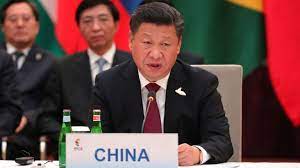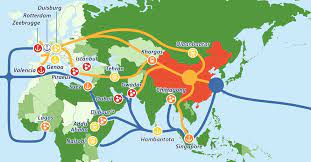China’s Transition From the Belt and Road to the Global Development Initiative

Even as China’s Belt and Road Initiative gears up to celebrate its 10th anniversary, the new Global Development Initiative (GDI).
Islamabad: Chinese leader Xi Jinping announced the concept at the United Nations General Assembly in September 2021. By September 2022, over 60 nations had joined the Group of Friends of the GDI. The World Economic Forum hailed China’s GDI as a “timely call-for-action to address the immediate challenges that threaten our collective ability to deliver on the Sustainable Development Goals.”
Meanwhile, the waning BRI is being eclipsed, if not replaced, by the GDI. What are the differences between the two, and why has China decided to push forward this new development initiative?
Contextualizing and comparing the separate launches of the BRI and GDI can shed important light on the differing scopes and objectives of these two initiatives.
First, the international economic backgrounds at the time when these two initiatives were launched were quite different. The BRI arose at the end of the commodity boom, where trade with developing countries reached its peak whilst the rest of the world was struggling to recover from the Global Financial Crisis. The subsequent decline of commodity prices weakened the economic leverage China had been using to gain access to raw materials and to develop markets for its manufactured products. Therefore, the BRI was a vehicle for Beijing to cultivate linkages with the Global South beyond trade.

By contrast, the GDI was launched at the apex of the COVID-19 pandemic, which not only disrupted global supply chains but also put many BRI-related infrastructure projects on hold. According to a survey in mid-2020, 20 percent of BRI projects were reported to be “seriously affected” by the pandemic. In 2021, BRI-related investments fell to $56.5 billion from $60.5 billion in 2020. With the BRI losing momentum, it’s no coincidence that China decided to launch a new development initiative taking a different approach – one less reliant on heavy infrastructure construction.
The geopolitical context also changed markedly between the BRI’s launch and the GDI’s. The BRI was launched amidst the United States’ “pivot to Asia” strategy, whereby Washington had just started to shift attention from the Middle East to the Asia-Pacific. The GDI was inaugurated against the backdrop of heightened great power competition and after the launch of a dedicated Indo-Pacific Strategy by the United States. Moreover, the United States and its allies began responding to the BRI with their own development arrangements – namely the B3W Initiative and the Global Gateway. Many regard them as rivals of the BRI, with the aim of asserting U.S. and European power in the realm of global infrastructure development.
The BRI and GDI also emerged from different domestic considerations within China itself. The GDI emerged at a time when China’s government budget deficit problem has deteriorated, with debt levels rising from 2,1 percent of GDP in 2013 to 8.6 percent in 2020 before declining slightly to 6.1 percent in 2021. Consequently, the widened fiscal deficit has come to hinder China’s capability of financing large-scale infrastructure projects under the BRI.
More broadly, the GDI followed the issuance of the 14th Five-Year Plan, which calls for a shift away from fixed-asset investment in speculative and unsustainable projects to more sustainable and financially profitable ones, including innovative, information, and integrated infrastructure projects. Hence, China’s shift toward emphasizing sustainable economic growth at home, and the pursuit of higher domestic consumption, coupled with its exacerbating fiscal problems, created different incentives for China’s development initiatives than the conditions seen in 2013, when China was leading the global recovery from the Global Financial Crisis.
Lastly, the venues for launching the two initiatives are symbolically different. The Silk Road Economic Belt was proposed in Kazakhstan, and the 21st Century Maritime Silk Road was raised for the first time in Indonesia, both of which are large developing countries. The GDI, by contrast, was launched during the United Nations General Assembly. Having the U.N. as the inaugural setting for the GDI conveys Beijing’s appetite – at least at its face value– to make this a multilateral arrangement. This is especially notable as the original BRI has been criticized for being a Sino-centric deal that prioritizes opaque bilateralism over inclusive multilateralism.
Different Operationalization
The GDI differs from the BRI not only in terms of background but also regarding its operationalization. To begin with, the main authorship of the policy documents explaining the two initiatives differs. While the National Development and Reform Commission is involved in most BRI-related policies, the Ministry of Foreign Affairs is taking the lead in formulating GDI-related documents. In the case of the BRI, although the secretariat for the BRI coordination is within the National Development and Reform Commission, the plethora of participating institutions and the failure of different Chinese state actors – i.e. party leadership, functional bureaucracies, and economic arms – to coordinate a unified strategy for the BRI led to fragmented motives and policies.
According to the List of First-batch Projects of GDI Project Pool, the China International Development Cooperation Agency will play an important role in implementing GDI-related projects on poverty reduction, pandemic response, food security, climate actions, and digital economy. Although this development agency was instituted in 2018 to help promote the BRI, its output has been meager, largely because it remains a coordinating body of China’s foreign aid policy. Now, its salience in implementing GDI projects would be a key factor to watch. Will the CIDCA play a more prominent role in China’s foreign aid policy and can it overcome a much criticized project management style?
Moreover, multilateralism and engagement with civil society feature higher in the GDI-related projects. This can be reflected in either extensive cooperation with international organizations (e.g. the U.N. Development Program) in implementing the projects or the establishment of multilateral platforms for development (e.g. the International NGOs Network for Poverty Reduction Cooperation).
Further, the GDI and the BRI focus on distinct issue areas. Beijing has become more prudent about infrastructure financing “due to its own economic woes, repayment problems and the low economic returns on its foreign loans, and accumulative complaints about the BRI adding to socio-environmental risks, unsustainable debts and governance and corruption issues in partner countries.” In contrast to the BRI, the GDI lays more emphasis on promoting software for development, i.e. poverty reduction, food security, pandemic responses, financing for development, climate change and green development, industrialization, digital economy, and connectivity.
Finally, the financing scheme for both initiatives varies. While the BRI is financed by a range of actors consisting of China policy banks, commercial banks, multinational development banks, and sovereign wealth funds, the GDI seems to rely primarily on the Global Development and South-South Cooperation Fund (GDSSCF), which is an upgraded version of the erstwhile SSC Assistance Fund in partnership with the UNDP. According to the 2023 Progress Report on GDI, the GDSSCF amounts to $4 billion. Also, financing for the BRI involved a mix of grants, interest-free and/or concessional loans, whereas the fundings from GDSSCF takes the form of grants. Given that Beijing is increasingly cautious about its overseas foreign direct investment and funding large-size projects, the GDSSCF may address the criticisms concerning China’s traditional foreign aid to developing countries, that is, corruption and the lack of transparency and accountability.
While no formal security concepts accompanied the BRI, the GDI is backed up by two other parallel initiatives, namely the Global Security Initiative and Global Civilization Initiative. The GSI Concept Paper makes reference to “development” 17 times, and suggests that a range of current world conflicts can be attributed to underdevelopment and, therefore, can be solved by development. Altogether, this collection of Chinese initiatives in the realm of development, security, and culture will have normative implication vis-à-vis the purported universalism of Western liberal understanding of concepts like human rights and development.
Admittedly, the BRI will not fade away for the short term; after all, it is enshrined in the CCP Charter. The concrete development of the GDI remains to be seen, but there are initial signs showing that the GDI is incrementally gaining momentum in a context far different from the one that conditioned the launch of the BRI one decade ago.





